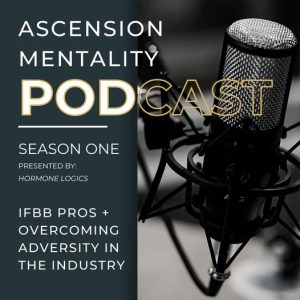The (Proper) Lending Package
- Home
- Uncategorized
- The (Proper) Lending Package
The (Proper) Lending Package
Ahhhh. The closing table. The smell of fresh toner melted all over the stack of neat papers sitting beside the suit who will ask you to sign your life away with his cheap BIC pen.
You’ve made it!
You’ve provided every single document they wanted, and then a few more. You’ve spent hours upon hours discussing intricate details, creating reports, updating a resume, yelling at your accountant, and probably lost a few hours of sleep.
You’ve done all this and you’ve made it to the closing table.
But. Have you ever considered how much productivity you’ve sacrificed during this process? Considered how much attention have you paid to this process that you could have otherwise spent building your business? Wondered if there’s an easier way?
I’ve had clients tell me that getting a loan from a bank is like having all your teeth removed because of decay and then you personally need to evaluate each one to determine if they’re okay to reinsert. And then reinserting them all one by one.
Yikes.
You made it through the financial colonoscopy that banks make business owners go through. You’ve jumped through all the flaming hoops at the financial circus. You’ve dedicated your first born and maybe even donated blood. (not really, but you get the point.)
What happens when the bank turns down your loan application? Ghosts you? Leads you to believe it will get approved but takes months to get any sort of answer all to come to the conclusion that you didn’t provide enough information. Frustrating. Right?
This is part of what my team does; we help clients put together complete lending packages. We call them the Proper Lending Packages. We have a bit of a process and, it’s likely we’ll ask lots of questions, but this helps us be prepared for supporting you and your business throughout the entire process.
All lending packages are not the same. Some lenders want to see LOTS of documents. Some lenders only want to see a few. Some lenders want additional documents signed that are specific to their lending institution or their financing product. It’s important to have all of them ready, accurate, and understood before beginning the process to ensure a higher rate of success. When a business owner sends in financials that are A) wrong B) not what the bank asked for C) late, it doesn’t give a lot of confidence to the banker that you actually know what you’re doing.
Some clients I’ve worked with think it’s the bankers job to educate them on all their financials, all the various documents, and actually help them prepare them. It’s not. It’s not your accountant’s job either. An accountant’s job is to ensure proper accounting of your historical financial performance; not create a loan package.
So then, who’s job is it to educate the business owner on the lending process and put together (and ensure the accuracy of) the lending package? It’s the CFO’s job. And. If you don’t have a CFO, then it’s likely your job.
The team at Strategic Voyages has helped hundreds of clients with their lending needs and has likely encountered a situation similar to yours. We can help. Contact Us today for more information on our process.
The proper lending package will (likely) include the following items:
- Business Tax Returns
- Personal Tax Returns
- Profit and Loss Statement
- Balance Sheet
- Accounts Payable and Aging Summaries
- Personal Financial Statement
- Debt Schedule
In some situations, a business plan and resume are also needed.
So what does a bank do with all this paperwork? Let’s start at the top.
The Business Tax Return
Often, the bank reviews the tax returns for debt service ability. This is a business’s ability to repay the loan that the bank is considering giving out. A bank really doesn’t care if you’re made all your payments if, on paper, you can’t afford the new loan’s payment.
Some more knowledgeable bankers will be able to review and actually read your Business Tax Returns as they tell a story.
The bank will also, at some point in their process, likely request that you sign a 4506-T. I’ll go into more details of this form in another article. Suffice it to say that a 4506-T allows the bank to check with the IRS to confirm that the Business Tax Returns you submitted for your loan request are the same ones that you filed with the IRS.
Personal Tax Returns
I get asked this question often; Matt, why is the bank requesting my personal taxes? Isn’t my business the one taking out the loan? Yes. Your business is. And as a owner of the business, there are several reasons why a banker will ask for the personal taxes. One reason is to see what other business income or (loss) you may be reporting. They consider this in their due diligence process and factor it into a Global Cash Flow formula when determining if you can repay the loan.
Profit and Loss Statement
While this might be an obvious part of the lending package, what isn’t so obvious is the story the Profit and Loss Statement tells a banker. A good banker can take a glance at a Profit and Loss Statement and compare it to a Business Tax Return to see if income, profit, and expenses are on track with historical performance. If there are wild swings in trends, expect lots of questions.
Balance Sheet
A list of all your Assets, Liabilities, and Equity Accounts. This tells the Banker if your business is solvent, liquid, or on the verge of bankruptcy.
Accounts Payable and Aging Summaries
These reports show a Banker how much you owe your vendors (on the Accounts Payable Report) and if you’re using your vendors as a bank. Lots of greater than 90 day amounts show a lack of positive cash flow which is a huge turn off for a Banker. The Aging Summary shows the Banker your client concentration, your ability to collect, and if there is any income you probably need to be honest about writing off.
Personal Financial Statement
Many banks have their own form, but they all tell the same story; how are you handling your personal finances. Are you personally financially stable? Do you have reserves (personally) that are reasonably appropriate to what income levels and debt levels your business does on an annual basis.
We helped a client once who was looking for a $2,000,000 loan for his business. His business could absolutely afford to make the payments. But he had reinvested just about all the profits back into the business and hadn’t paid himself in years. He was personally broke and living off the profits of the business. The bank ended up turning down his loan request because he didn’t have any personal assets. Over the course of a few years, my team worked with the business owner to fix this issue and ultimately secure funding.
Debt Schedule
This is a list of all your business’s debts. Likely, a Banker wants to see this to determine which of your debts will be paid off with a new loan, what options they may have with some creative financing, and if it matches the Liabilities on your Balance Sheet.
Just about every business owner we work with doesn’t have this readily available. They conceptually understand it, but haven’t ever put pen to paper and written it down. We help create a debt schedule as part of our process to ensure the business owner can see, in everyday terms, all their debt, all their debt payments, and clearly outline which debt items need to be paid off and the net benefit to the business’s cash flow.
Having The Proper Lending Package is a very important step towards obtaining financing from a bank. There are quite a few other parameters and considerations that Bankers use when determining whether their bank will lend your business money.

Want to discuss funding options for your business? Stuck with high interest rate lending products? Tired of not having cash flow support at a reasonable rate? Want to work with a team that actually takes your call, understands how emotional the process is for you, and can actually work alongside of you throughout the entire process?







